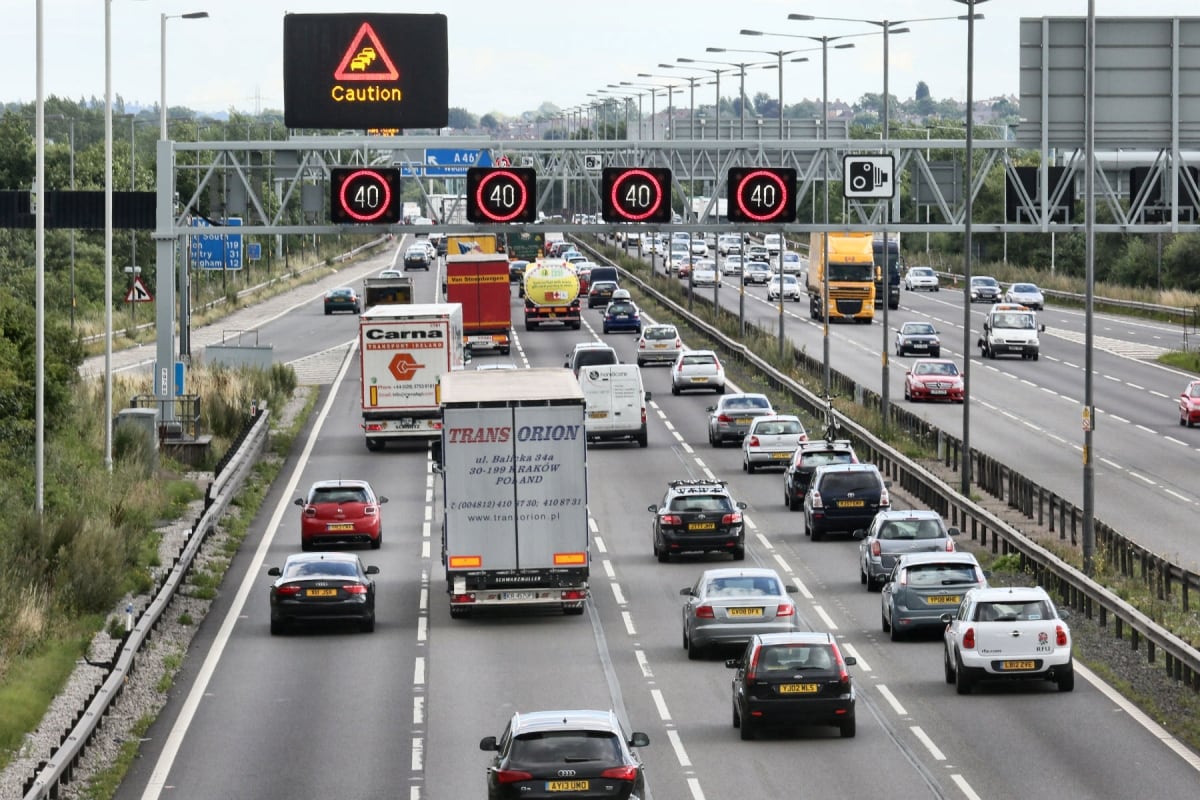Government stops new smart motorways plan – but campaigners want them all scrapped

The Government’s decision to stop building more so-called smart motorways has been welcomed by safety campaigners, But it does not go far enough, they say, and are calling for hard shoulders to be restored to all UK motorways.
Prime Minister Rishi Sunak, who had pledged to stop building smart motorways as part of his Conservative leadership campaign, confirmed over the weekend that plans to convert 14 more stretches of motorway to “smart” status have been cancelled, citing cost as well as safety concerns.
In a statement the Department for Transport said the decision recognised a lack of public confidence felt by drivers, as well as financial pressures.
The government recently delayed a number of road schemes for up to 5 years as the transport budget is pumped into the bottomless pit marked “HS2”. This included a number of smart motorways that were scheduled to be converted during the third Road Investment Strategy period (2025 to 2030).
However, smart motorway schemes on the M56 (junction 6-8) and M6 (junction 21a-26) will be completed as they are already over three-quarters constructed.
The government estimates the cancellation of the 14 schemes will save more than £1 billion, while allowing more time to track public confidence in the existing smart motorways over a longer period. Most of the savings will be spent on safety improvements to existing smart motorways. In a previously announced £900m package, 150 extra emergency refuge areas will be built, and technology to spot broken-down vehicles will be installed.
Around 10% of England’s motorway network has already been converted to smart motorway standard. On some of these, the hard shoulder has been replaced by an extra permanent running lane, with refuge areas for broken-down vehicles along the route. Others include a “dynamic hard shoulder”, where the hard shoulder becomes a running lane during peak traffic periods, with overhead signs advising whether or not the lane is “live”.
Data from National Highways shows there have been 63 fatalities on stretches of smart motorway between 2015 and 2019. And a BBC Panorama investigation showed near misses between broken down and moving vehicles on one stretch of the M25 had risen 20-fold since the removal of the hard shoulder.
Motoring bodies want to see more action on smart motorways. The AA is calling for all existing schemes to now be converted back to permanent hard shoulders. AA president Edmund King said: “Drivers don’t trust them, the technology is not foolproof, and 37% of breakdowns on smart motorways happen in live lanes. And basically those drivers are sitting ducks.
And campaigner Claire Mercer, whose husband Jason was killed on a smart motorway in South Yorkshire, is also pushing for a return of the hard shoulder, saying: “It’s the existing ones that are killing us. And I’m not settling for more emergency refuge areas. So it’s half the battle, but we’ve still got half the battle to go.”
But the government quickly responded to reject these calls. A spokesman for the Prime Minister said: “Adding in hard shoulders would be extremely disruptive to the public trying to go about their day, both for road users for local communities, and that obviously would come at a significant cost to the taxpayer.”
The RAC called the move a “watershed announcement”. Road safety spokesman Simon Williams said: “Our research shows all-lane running smart motorways are deeply unpopular with drivers so we’re pleased the Government has finally arrived at the same conclusion. It’s now vitally important that plans are made for making the hundreds of existing miles of these types of motorway as safe as possible.
He added: “The possibility of converting all lane running stretches to the ‘dynamic hard shoulder’ configuration, where the hard shoulder is open and closed depending on the levels of traffic, could be one option the Government considers.”
Around 10% of England’s motorway network is made up of smart motorways – these include ‘all lane running’ schemes where the hard shoulder has been permanently converted to a live lane and ‘dynamic hard shoulder’ where the active lane only operates part-time.
The construction of smart motorways had already been put on hold in January 2022 to gather more safety data on their operation after a damning report by the Transport Committee.
Sunak said: “Many people across the country rely on driving to get to work, to take their children to school and go about their daily lives and I want them to be able to do so with full confidence that the roads they drive on are safe.”
The smart motorway schemes that will not be built
Already paused: M3 Junction 9 to 14 M40/M42 interchange M62 Junction 20 to 25 M25 Junction 10 to 16
Dynamic hard shoulder to all lane running conversions: M1 Junction 10 to 13 M4 – M5 interchange (M4 Junction 19 to 20 and M5 Junction 15 to 17) M6 Junction 4 to 5 M6 Junction 5 to 8 M6 Junction 8 to 10a M42 Junction 3a to 7 M62 Junction 25 to 30
Planned for construction: M1 North Leicestershire M1 Junction 35A to 39 – Sheffield to Wakefield M6 Junction 19 to 21A – Knutsford to Croft


